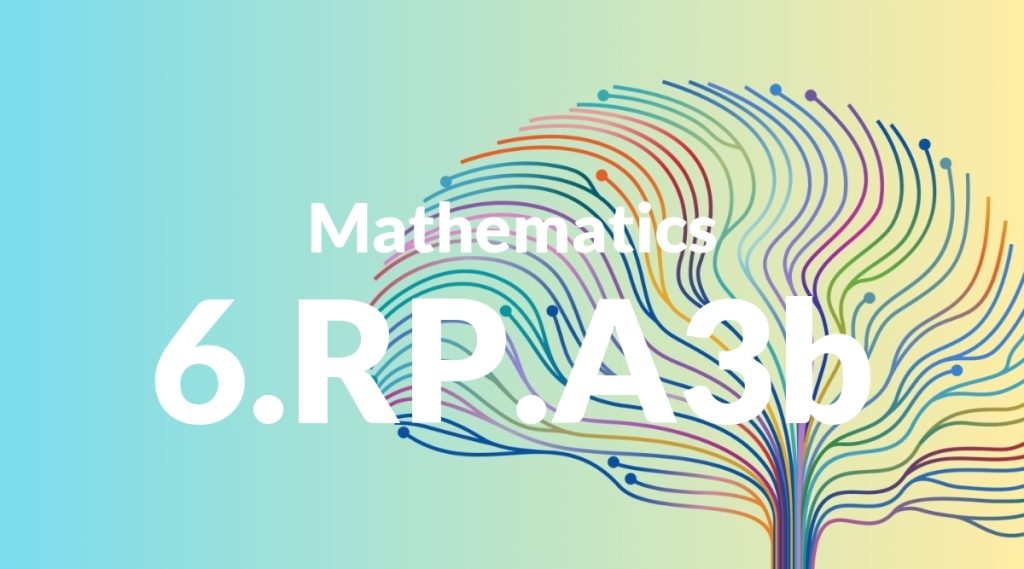Standard: 6.RP.A3 – Use ratio and rate reasoning to solve real-world and mathematical problems, e.g., by reasoning about tables of equivalent ratios, tape diagrams, double number line diagrams, or equations.
Grade level: Grade 6
Subject: Mathematics
Domain: Ratios & Proportional Relationships
Teacher Overview
This standard focuses on using ratio and rate reasoning to solve real-world and mathematical problems. It is crucial because it helps students develop a foundational understanding of proportional relationships, which is essential for more advanced mathematical concepts. Before tackling this standard, students should be comfortable with multiplication, division, and fractions. They should also have a basic understanding of ratios and simple one-step equations.
Mastering this standard will prepare students for more complex problems involving proportional relationships, including algebra and geometry. They will also gain a deeper understanding of functions and linear relationships.
Common Misconception 1
Some students may think that ratios are always expressed in the same units. This misconception arises from a lack of understanding that ratios can compare different units, such as miles per hour or price per pound.
Intervention 1
To address this misconception, use visual aids like tape diagrams to show how ratios can compare different units. Provide practice problems that involve converting units to reinforce this concept.
Common Misconception 2
Another common misconception is that the order of terms in a ratio does not matter. This can lead to incorrect solutions, especially in real-world contexts like recipes or map scales.
Intervention 2
Emphasize the importance of order in ratios by using real-world examples. Demonstrate how changing the order of ingredients in a recipe, for instance, can affect the final product.
Prerequisite Knowledge
Students should have a basic understanding of multiplication, division, and fractions. They should also be familiar with the concept of ratios and have some experience with solving simple one-step equations.
Subsequent Knowledge
After mastering this standard, students will be able to tackle more complex problems involving proportional relationships, including those found in algebra and geometry. They will also develop a deeper understanding of functions and linear relationships.
Instructional Activities
- Create tables of equivalent ratios and analyze patterns.
- Use tape diagrams to solve ratio problems.
- Practice with double number line diagrams to understand proportional relationships.
- Solve real-world problems involving ratios and rates.
- Work on converting units to solve ratio problems.




